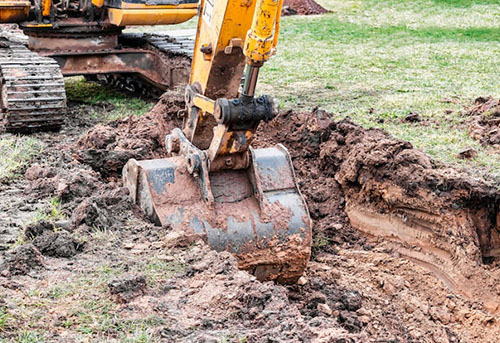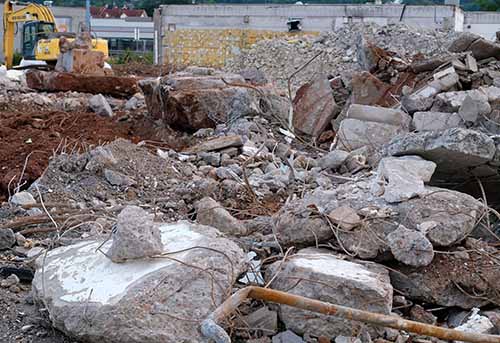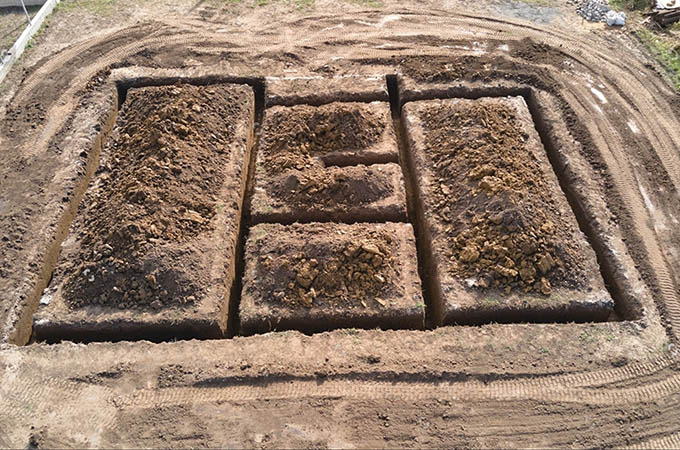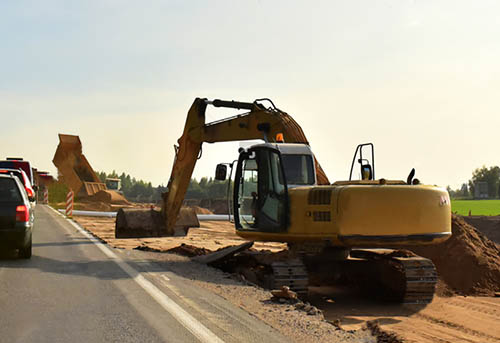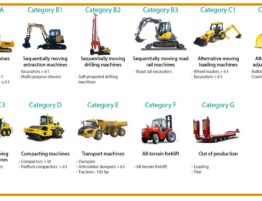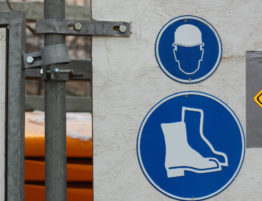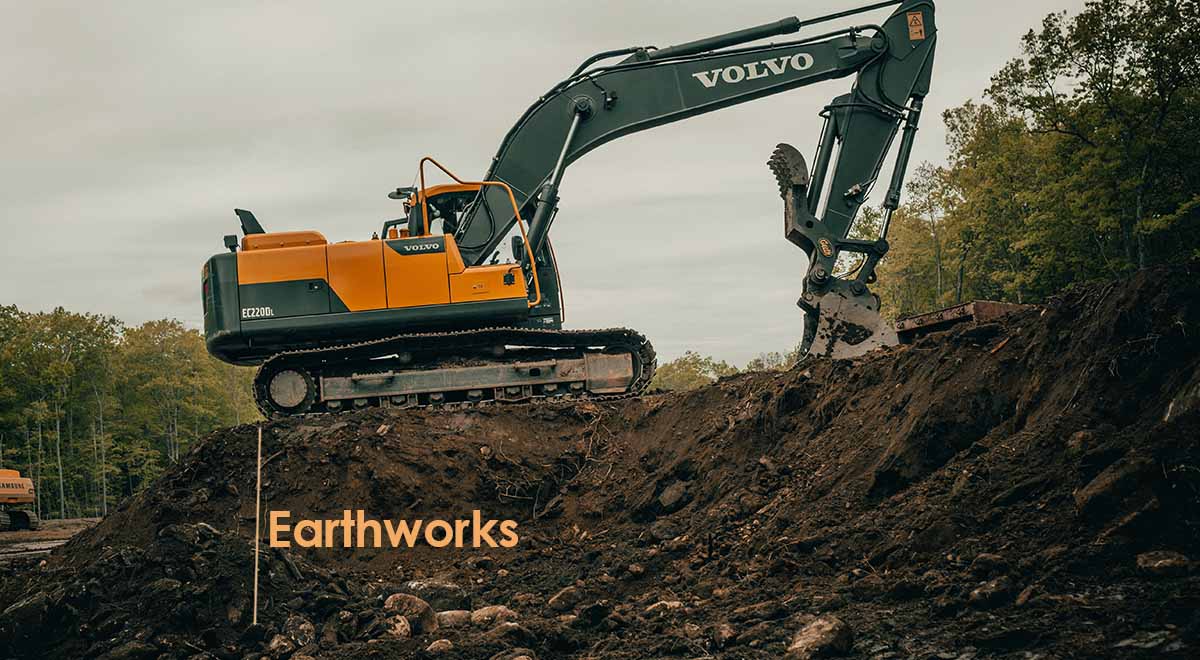
In construction, earthworks are unavoidable. If building is a lifetime project, earthwork doing is the insurance of this life project. Indeed, earthworks are a guarantee of stability and durability for a future building or structure. It consists of optimally preparing the ground that will accommodate the infrastructure. And depending on the specificities of the land, earthworks involve operations that are as complex as they are varied. If in general such work is entrusted to professionals in the construction trades, it is also wise to know the basics to better guide and carry out a project. It would even be possible to undertake this work yourself for an individual project. But then how
to define earthwork ? Why is it necessary ? How is it conducted and what are the different types ? And how much do earthworks usually cost ?
Earthwork: definition and principle
What are earthworks ?
Imagine yourself in possession of a sloping land or whose surface is irregular and on which you plan to build ! Unless you want to create an architectural work that defies the laws of nature, you must level your ground first. And that’s where earthworks come in.
Earthwork includes land development operations with the aim of setting up a construction there. In other words, it consists in preparing a ground on which you want to build or reinforce a structure (building, road, dam) or carry out an external installation (terrace, garden, swimming pool, garage, car-park, etc). This is a capital point of the structural work in the steps of a house building.
Earthwork principle
To do his job, the digger, equipped with the appropriate equipment such as earthmoving machinery, will shape the soil by digging it in specific places and moving large quantities of earth. It is as a true field sculptor that he works. And depending on the ground aspect, he can also bring earth to it in order to fill in concave zones. Earthworks are said to consist of digging and filling earth.
Excavations carrying out
Excavation consists of removing earth or rubble from land in order to level or lower it. Different techniques can be used to achieve this depending on the type of soil (rocky, loose, etc.). For example, it is during excavation work that a mechanic shovel will dig a trench where pipes will later be buried.
After earth extraction, it is transported to the landfill or to the waste collection centre. Depending on the soil quality, it can be sorted on site if necessary to reuse as backfill. It is sometimes also possible to monetize the removed land from operators of farms, quarries or building sites.
Backfill
A backfilling operation is the addition of materials (earth, sand, gravel, etc.) to the ground in order to level or raise it. The backfill can then be compacted with a construction machine such as a compactor. The objective of this maneuver is to bridge any gaps in the terrain and obtain a stable construction platform that resists natural ground movements.
Excavation digging and backfilling bring the natural terrain with its roughness and faults to the technical level required by the project.
Why are earthworks important ?
A civil engineering work or an outdoor development offering guarantees of safety first requires successful earthworks. Indeed, earthworks make it possible to properly establish the structure to be built. Since each construction project has its own specifications, the land must be adapted to the project requirements. Earthworks therefore correct the morphological defects of the soil in order to make it suitable for the construction. Thus, soil can be stable, solid and resistant, without putting its users in danger of flooding, subsidence, landslide, collapse or other dangerous ground deformations.
Moreover, it is thanks to the earthworks that the ground is optimally prepared for connection operations to the various networks (electricity, drinking water, telecommunications, etc.) and water drainage.
In short, a well-graded site facilitates construction work and ensures the quality and durability of the structure to be carried out. Neglecting this step can later lead to serious damage requiring heavy and expensive repairs.
Measures to take before earthworks
In order to maximize earthworks success, some measures should be taken beforehand.
Soil study
This step allows to know the composition and the nature of the ground to be levelled. And thanks to the results obtained, the earthmoving company will know what actions to take during its service. For example, depending on the nature of the project, dense soil will require less earthworks than sedimentary soil. In the same way, the professional digger will not work a clay-dominant soil in the same way as a calcareous soil.
Even if it is not a systematically mandatory procedure, soil study is strongly recommended.
Land staking
It is the surveyor who intervenes at this stage. He is responsible for measuring and materializing the limits of the land to be built (or the layout if it is a road). Its expertise also makes it possible to define the height and the limit of the zones to be dug or to be filled and to identify the zones dedicated to the pipes. In a way, it is an operation that directs and supervises the earthworks so that they respect the architect’s plans.
This step is particularly interesting because it makes it possible to delimit the circulation and storage areas. Given the flow of workers and construction machinery mobilized, it is crucial to take the right safety measures on a construction site.
Moreover, by marking the official limits of a land, picketing makes it possible to carry out a work which will not be subject to dispute between neighbors.
Before earthworks: stumping, various demolitions and stripping
In its natural state, building land may contain many elements that are unsuitable for construction work. It can be trees, rocks, old infrastructure or various debris that will interfere with the earthworks.
These elements are therefore cleared using appropriate tools or construction machinery (chainsaw, pickaxe, concrete grinder, bulldozer, excavator, dump truck, etc.). Then we proceed to the stripping or disbursement which consists in removing the vegetal layer (surface layer) of the earth. This layer, generally 0.2 to 0.4 m thick and composed of plants and organic waste, is very unstable and therefore unsuitable for construction. Once removed, it can be stored to be reused later or not to develop green spaces, for example.
In addition, the presence of stagnant or dripping water can compromise the quality of the foundations. In this case, the water is evacuated before starting the earthworks. The creation of a minimum slope of 5% and drains laying are then indicated. Moreover, it is preferable to do earthworks in dry season to avoid soil moisture problems.
The different types of earthworks
Earthmoving has a very wide field of action. From one construction project to another, certain operations will be necessary or not. The types of earthworks commonly encountered on construction sites are as follows.
Surface or general earthwork
In this category of earthworks, the work carried out simply makes it possible to level a relief zone. This type of earthwork can be used to create a driveway or a garden, for example. Stripping is also sometimes considered as general earthwork.
Classic or ordinary earthwork
When it comes to new construction or the development of a building or structure, this type of earthwork is used.
To this end, the earthworks will concern the usual operations of digging and backfilling, but also the excavations digging intended to receive the concrete of the foundation soles.
Earthworks by suction
This newer form of earthwork has the same functions as classic earthwork. But instead of conventional machines (excavator, backhoe, bulldozer, etc.), a suction excavator or vacuum truck is used. It is a more effective and faster technique, but it can be more expensive.
Earthworks in excavation
This type of earthwork is referred to when it comes to preparing the ground for the construction of a buried structure. It can be a swimming pool, a basin, an all-water pit or an underground room. The earthworks company then carries out large excavations below ground level. The volume of soil removed is much greater in this case.
Roads and Public Utilities earthworks
Roads and Public Utilities include, on the one hand, construction work on roads allowing the free movement of a population. On the other hand, they concern operations to connect structures or homes to existing public networks (energy, water, telecommunications, water drainage).
And in the implementation of Roads and Public Utilities works, whether construction or development, earthworks remain inevitable.
Indeed, to build a civil engineering structure (road, railway, bridge, etc.), it is just as necessary to prepare the ground. The digger then intervenes to carry out digging, backfilling and dig excavations for the foundations. Also, trenches are formed for the burial of pipes and cables of networks and piping.
Moreover, in the context of the construction of a house or a building, the earthworks will make it possible to make the land viable by connecting it to the various networks. They also make it possible to create waste and rainwater drainage systems.
Other forms of earthwork
For sloping land, there are also other types of earthworks such as riprap and embankment.
Riprap is used to contain land that can collapse near a house or a road using rocks. Embankment is based on the same principle, except that instead of using rocks, a sufficient slope of the ground is created around the structure to eliminate the thrust of the raised ground.
Earthwork: how much does it cost ?
Factors to consider
Several elements must be taken into account to estimate the cost of an earthmoving operation.
- The land surface to be worked: a larger surface will imply a higher cost.
- The relief and configuration of the terrain: a strong difference in the levels of the terrain will require more work.
- The nature of the soil: this parameter can greatly affect the price of the earthworks. Indeed, it can condition the various operations to be carried out as well as the volume of cut and fill.
- The type of equipment needed: simple digging tools or heavy construction machinery.
- The location of the site: an area that is difficult to access will raise the earthwork estimate. In addition, the digger will take into account the company-site route and the site-discharge distance to estimate his work.
- The chosen construction or earthmoving company: it is according to their experience and skills that the professional will draw up their invoice. To do this, he will take into account all of the above, but also the necessary manpower.
Price of earthworks in 2022
Generally, earthworks are billed per m³. But it is not uncommon to have eathwork quotes per m², per hour or per day.
The following average prices excluding tax are given for information only. Indeed, it would be difficult to put forward exact amounts to be attributed to earthworks. Amounts may vary from region to region. In order to have a precise idea of the cost of your work, you must request a professional quote.
- Complete earthworks (excavation, backfilling, earth removal): 15,000 to 30,000 CFA francs per m³.
You can reach a daily rate of 300,000 to 600,000 CFA francs. - Excavation earthwork: 5,000 to 12,000 CFA francs per m³.
- Backfilling: 4,000 to 10,000 CFA francs per m³.
- Earth and rubble removal: 3,000 to 8,000 CFA francs per m³. The bill can quickly rise if it is waste removal.
- Mechanical trench digging: 2,500 to 6,000 CFA francs per m³.
- Narrow trench digging: 1,500 CFA francs per linear meter.
For manual earthworks, prices will rise because of the increase in the number of working hours and workers.
Don’t forget that preparatory work (demolition, stripping, water drainage, etc.) may be necessary before starting the earthworks. In this case, the final cost will certainly no longer be the same. A mechanical stripping operation can cost 1,500 CFA francs per m² while a major demolition can easily be costed at 50,000 CFA francs per square meter.
And if you plan to carry out your earthworks yourself, your budget must above all consider the cost of construction machinery rental. This is a significant point because it takes between 150,000 and 300,000 CFA francs per day to rent a mini-excavator of less than 5 tons or a backhoe loader, for example.
What to remember from earthworks ?
One of the primary factors in the longevity and stability of a structure to be built is the earthworks. It provides a solid foundation for construction and makes other work easier. And depending on the soil to be worked, it can require many specialized operations such as excavation digging and backfilling. The use of different construction machinery may also be required. It is therefore a heading that can weigh heavily in the budget of a construction project.
For the construction or renovation of a individual house, you can choose to undertake the earthworks yourself. However, it is always preferable to hire an earthwork company given the complexity of the tasks involved. This solution will guarantee you work carried out to professional standards. And you will save time and money, in complete safety.
